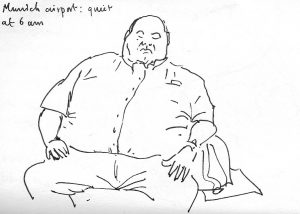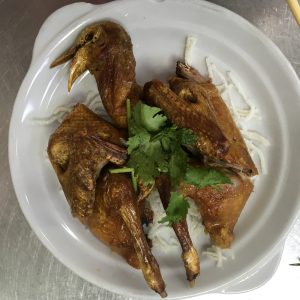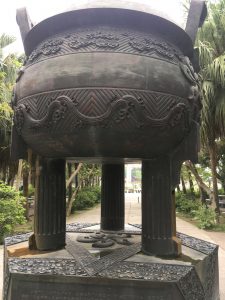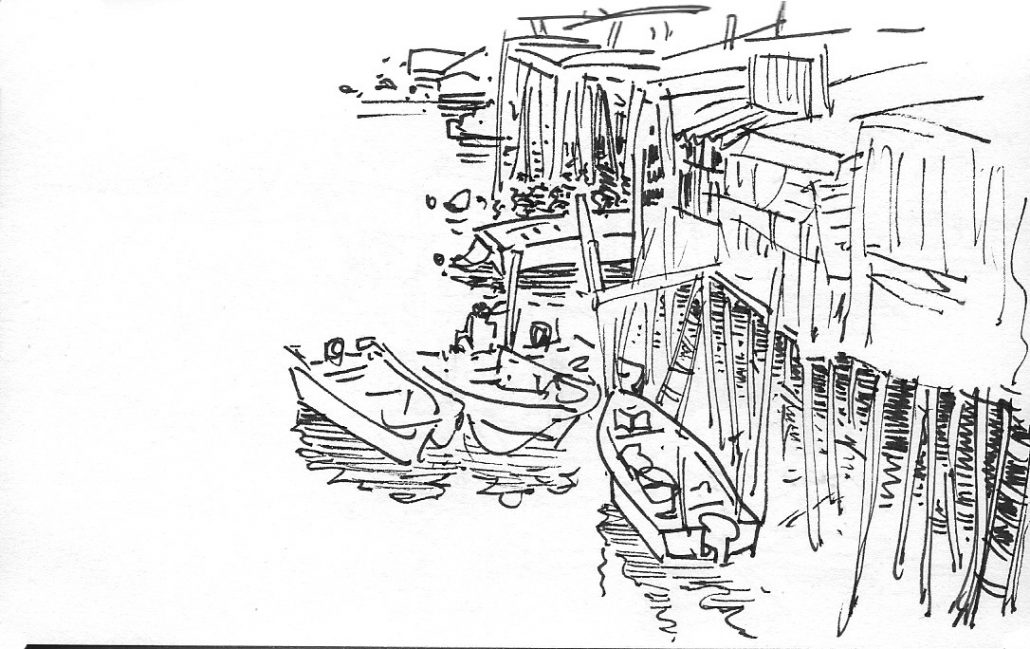belatrova in Hong Kong
belatrova will go to the farthest corners of the world to seek inspiration, and, in this month of May, decided that a visit to Asia would blow away the cobwebs and stoke the fires of creativity and imagination. So, on your behalf, belatrova flew to China’s south coast to a place that is surrounded by the South China Sea and is made up of a peninsula and over 200 offshore islands.
What a complex place Hong Kong is – belatrova’s first ever visit was an introduction to a 21st century cityscape, a vibrant, densely populated urban centre that is a major port and global financial hub with a skyscraper skyline, as well as to a calm and timeless rural scene that contained Chinese Pond Herons, blue spotted mudskippers, frogs and dragonflies.
Strolling down Nathan Road, the spine of Kowloon, towards the harbour to catch the Star ferry to Hong Kong island is a challenge to those conventional types who like to walk in straight lines; the streets are crowded with energetic and focused inhabitants going about their business, and the art is to look ahead and avoid the many characters who jump out and try to lure you into their tailors’ shops. The heat and humidity makes one want to strip off down to one’s underpants, so the thought of a made-to-measure suit is not uppermost in the mind as you drip and sweat your way along the streets, stopping for iced tea and the air-conditioning provided everywhere by shops, cafes, buses, underground stations and shopping malls (NB. Inhabitants were not subjected to belatrova in underpants).
A further challenge is to stop yourself from buying steamed pork buns from street vendors, or egg tarts, or shrimp dumplings, or curry fish balls, or… you get the idea, food in Hong Kong is delicious and diverse and is eaten throughout the day either on the streets or at the uncomplicated neighbourhood eateries. A plate of pig knuckles at a modest restaurant in Ma Tau Chung district was probably the culinary highlight.
A train ride and local ferry took us to Lam Tsuen in the New Territories and a long walk along the river and estuary provided a fleeting view of the Chinese mainland and the tower blocks of Shenzen in the distance. The wildlife here is extraordinary, from the kites soaring above ones head to the invisible frogs in the river reeds with their incessant calls that sound like dogs barking. But it is the mudskippers and their strange little dance that stick in the mind. Fish that can breathe air through their skin and have flippers that they use as arms to crawl out of their muddy holes, poke their heads above the mud and check to see if the coast is clear with their goggly eyes, then skip and dance with each other, either courting or just having fun. In the distance an old woman on a “mud sleigh” was plunging her arm down into the mud and collecting them – presumably for eating.
The weather in May is hot and sultry, so any walking needs the occasional stop and rest, and in the estuary area there are a few shacks that serve cold tea or water. At one of these we tried a Roselle smoked tea drink – subtle and aromatic – and visited the animals kept at the back, including a seriously outraged goat that kept screaming “help”. Yes, it sounded all too human, and is a phenomenon reported by others, not least by a couple of belatrova supporters who were recently playing golf in the Malvern Hills (though they had drunk Armagnac the night before). Anyway, we also saw these beautiful Koi carp, some the size of a New Zealand Rugby player’s forearm.
Another view to enjoy is from Victoria Peak where you can look down on everything and work out exactly the positions of Central H.K. in relation to Kowloon and Lantau island. A No 15 bus from Exchange Square will take you uphill through narrow streets, zigzagging its way into the hills and finally getting to the very top after 40 minutes or so. Catch it on the way down and, if you’re in luck, the driver will teeter on the edge of peril as you sway and jolt your way back to the city.
The evening is a little cooler and a good time to walk around the markets of Mongkok: Ladies’ Market, Goldfish Street (besides fish, there are also the tiny frogs, hamsters, beetles, turtles, and all sorts), Flowers, Fishmongers and the Bird Market, where owners bring out their pet songbirds and feed them. The fish on display are for eating, on the other hand, and are so fresh they are still flapping and jumping on their slabs. Eels, conger, starfish, bass, you name it and it will likely be there – the Hong Kong palate is wide ranging and adventurous.
Not far is a square where the fortune tellers can be found; unfortunately as we waited in line for a small bird to reveal the future, the heavens opened and we took refuge in the public toilets with a few others, including a taxi driver who had been caught short and whom we commandeered for the journey back.
Soon after Hong Kong was handed back to the Chinese government by the British, Macau too was returned by the Portuguese. This small peninsula is an hour’s turbojet ride from Kowloon, and its historic centre still retains a European feel to it, with its churches, squares and the ruins of the 17th century St Paul’s College and Church, destroyed by fire in 1835. Nearer the water the A-Ma Temple is quietly beautiful, and, by way of complete contrast, Taipa, a mostly reclaimed strip of land reached via the longest bridge in the world, is an exercise in gargantuan vulgarity with its monumental hotels and casinos, specially the Galaxy hotel which looks like a small city in itself, all gold leaf, glass and marble. A slogan leading to its restaurant reads “Life is good, eat more”.
Back in Kowloon and off to the opera. The Chinese Opera. The Ko Shan theatre is hosting the “Bright Sing Cantonese Opera Troupe” and it is obviously a favourite with the older generation, specially women. Formalized movements and delivery are synchronized with music from the pit, and the costumes are beautiful.
The audience is relaxed throughout and the players act out their parts with aplomb, despite the rather naughty granny playing solitaire on her ipad, and the continual chatter of at least three granny clusters, and the non-stop flow of arrivals, even 60 minutes into the programme. Our ignorance of Cantonese did not help matters either, but it was such an unfamiliar experience that it was memorable. Click here for a taster.
Another combined train and bus trip took us to see the Tian Tan Buddha, or Big Buddha, a large bronze statue of Buddha Shakyamuni completed in 1993 and located at Ngong Ping on Lantau Island. It sits on top of its hill hidden away by lush mountains and the 268 steps to get a close-up view of it also gives you a sweeping panorama of mountain and sea.
Opposite the statue is the Po Lin Monastery, home to many monks who were chanting as part of a ritual in the main hall. Incense is offered up by the devout, and placed in special holders that include these giant three legged ones that remind one of belatrova’s very own three legged bowls.
From Ngong Ping it is a fifteen minute taxi ride to Tai O (Big Bay), an old fishing village on the coast where homes and shops are kept hovering above the sea by thousands of wooden poles or stilts. Tai O is home to the Tanka people, a community of fisher folk who have built their houses on stilts above the tidal flats of Lantau Island for generations.
A lot was done in a short space of time, and places were visited that have not been mentioned and deserve to be: the Hong Kong Museum of History, the Science Museum (“Don’t blow it, good planets are hard to find”), the beautiful Kowloon Park with its flamingos, the Mandarin’s House in Macau, the trip to Sai Kung and Sharp Island, the communal barbecue somewhere in the New Territories. And the people are easy going and straight forward, bright, busy and focused, and enjoying the small pleasures of life. How the experience affects belatrova’s creativity is anyone’s guess, but something is bound to come up. Until then, returning home was filled with great memories of a unique experience, musings that were interrupted by our very early morning wait at Munich airport with a group of contestants on their way home from a bodybuilding convention.

different sort of body builder at the airport
Next month we move into our recently built workshop and studio, of which more later, but it will signal a new stage belatrova’s development.
吻別〔-别〕
























